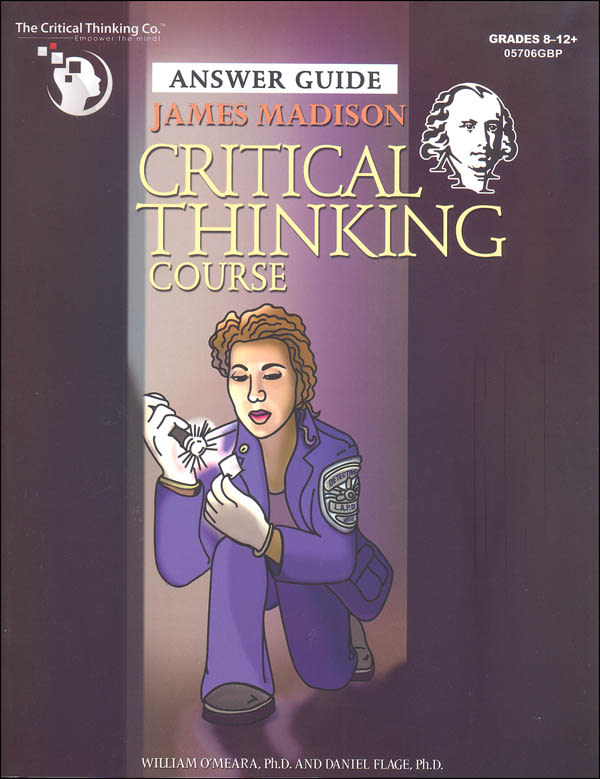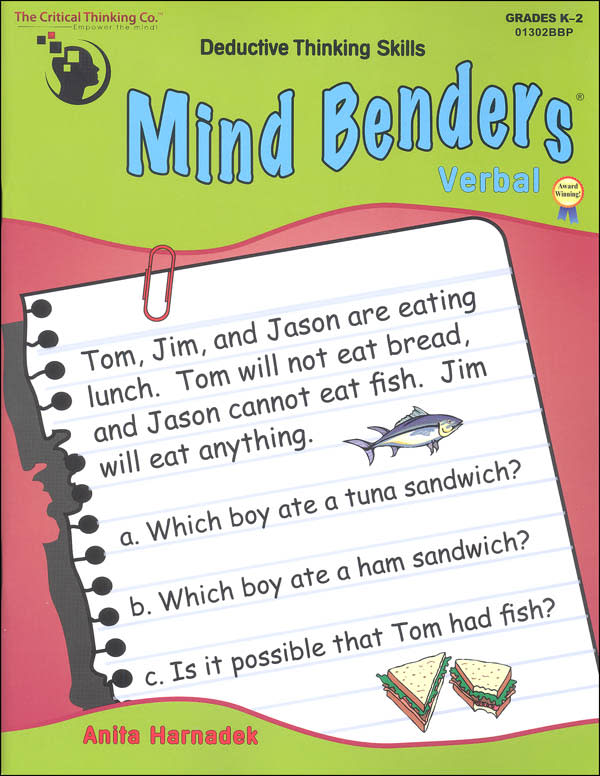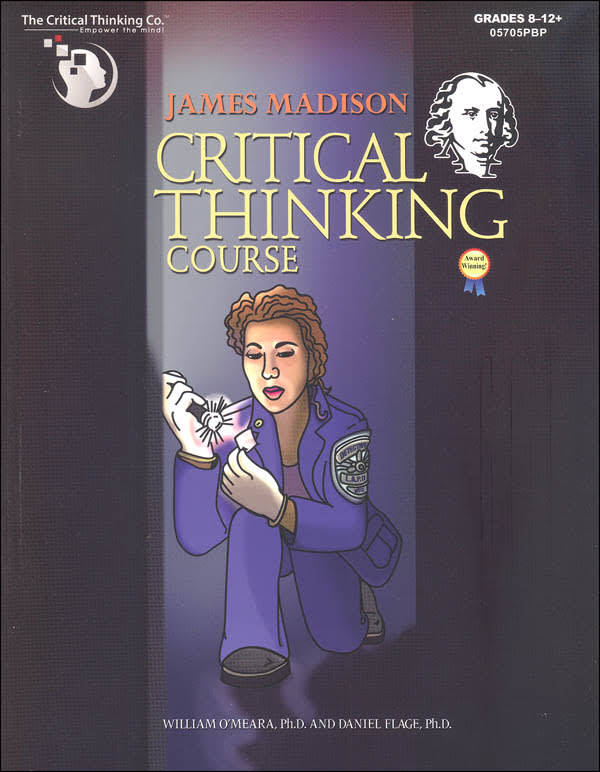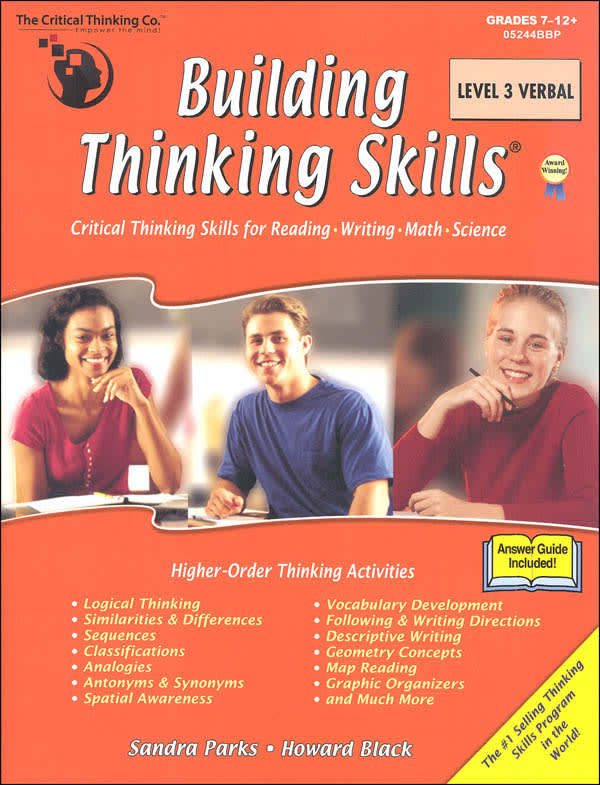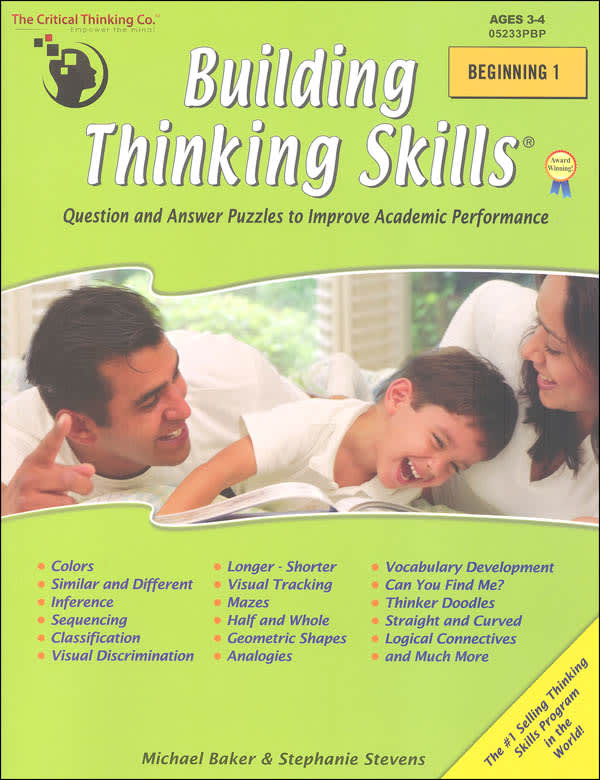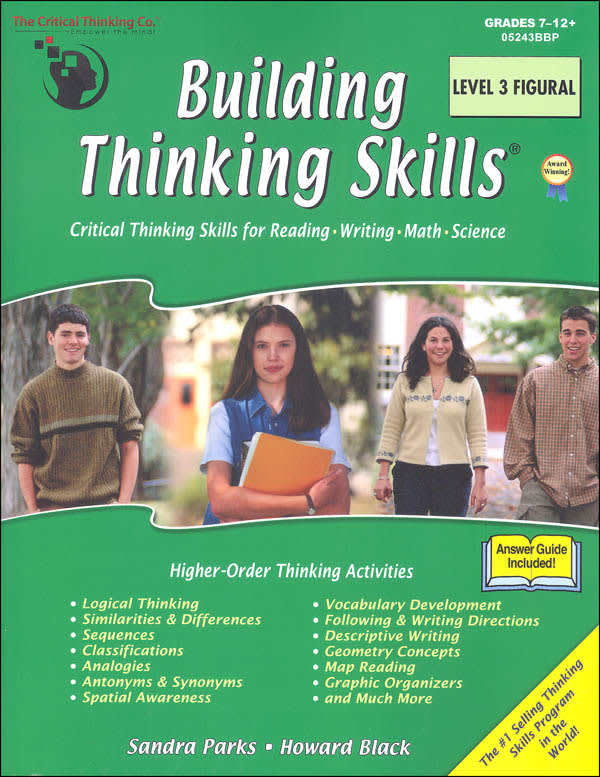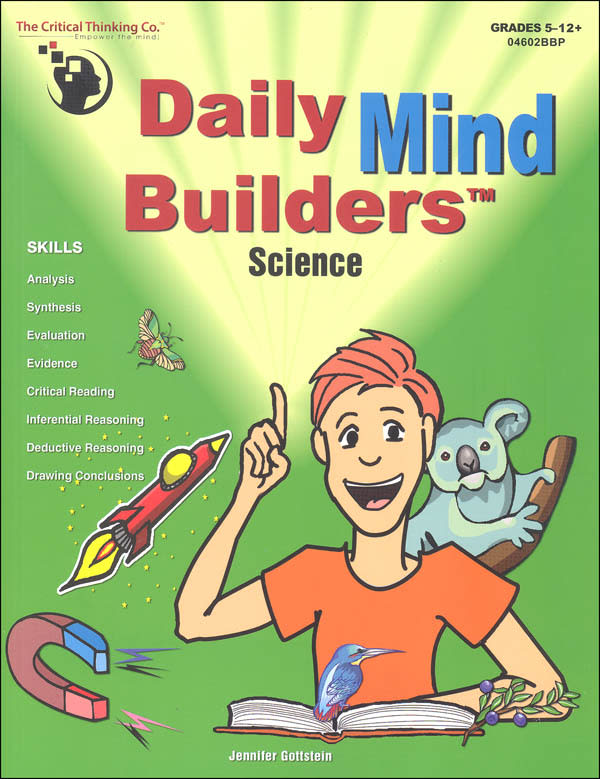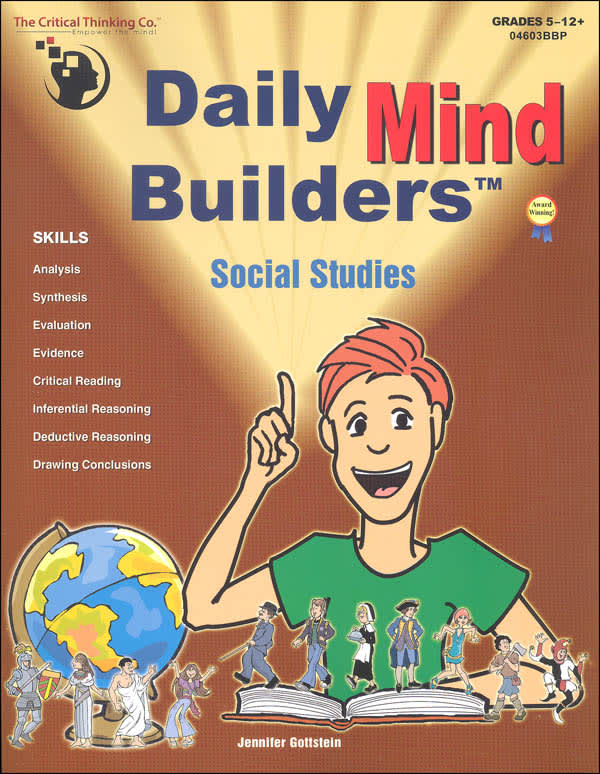Building Thinking Skills series
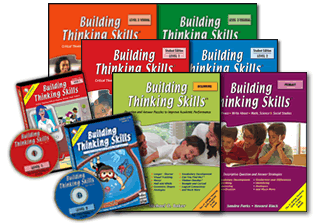
The Building Thinking Skills series is probably the most comprehensive resource for thinking skills for younger students. Each reproducible student book (except for Primary) includes an answer key. While students will be able to complete some lessons independently, others will require teacher interaction—more so with younger students. Each lesson should take about ten to twenty minutes to complete and requires minimal preparation.
The first four books in the series are written for preK through sixth grade. The books are quite large, ranging from 224 to 416 pages, increasing in size from the youngest level. (There are two additional books in the series, both for grades seven through twelve, but I have not reviewed them.)
The first book, Building Thinking Skills Beginning is suggested for ages three to four. This colorful book helps children develop pre-reading and math skills, auditory processing, and logic and spatial concepts. Attribute blocks might be used along with some of the lessons, but they are not required.
In Building Thinking Skills Primary for kindergarten through first grade, children deal with similarities and differences, sequences, classifications, and analogies. Visual-figural skills get a workout in these lessons, too. Attribute blocks and interlocking cubes are required for some lessons...Primary is the only book in this series that has a separate teacher’s manual which you need as an answer key as well as for instructional information.
Building Thinking Skills Level 1, suggested for grades two and three, begins with visual-figural skills then shifts to more abstract verbal work. For example, children work with figural analogies then with verbal analogies. Many of the lessons require children to analyze relationships between objects and words. Among other topics and skills addressed are deductive reasoning, classifying, describing, figural sequences, parts of a whole, spelling, vocabulary building, Venn diagrams, mental manipulation of two-dimensional objects, and sorting words into classes. This level is also available on CD-ROM.
Level 2, suggested for grades four through six, does all of the above, expands to additional types of analogies, and adds map skills and directionality, branching diagrams, “if-then” statements, overlapping classes, and more. Some activities require students to write out their answers or explanations. Activities vary in difficulty, so select those that seem most appropriate for each child. This level is also available on CD-ROM.
Mind Benders series
These are books for kindergarten through twelfth grade that work on logic "grids." See my review here.
Daily Mind Builders™ series
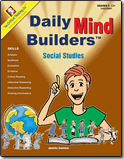
Three Daily Mind Builders books are available, each with a different subject area emphasis: language arts, social studies, and science. Books are geared for older students in grades 5 through 12 according to the publisher, although I'd probably recommend them for grades 7 through 12. The format is the same for each book. While subject matter for stories and exercises in the science and social studies books is drawn from those areas, the subject matter of the language arts book is very broad. All three books really fit best as critical thinking resources rather than tools for improving skills in any of the three subject areas.
There are 101 lessons in each book, and each lesson should take about 5 to 10 minutes to complete. You can use these in whatever order you please, whenever you want. Each lesson is presented on one page and is reproducible, and each student needs his or her own page on which to write.
Each lesson has two exercises. The first exercise has a very short story, usually based on an actual historical event. Students need to read it very carefully to be able to answer the question at the end of the story. Stories are actually somewhat like riddles, offering up clues as to the answer. While careful reading and use of clues within the story helps, some of these "riddles" are going to be impossible for your students to figure out on their own. There is simply not enough information, or students might come up with plausible but incorrect answers. However, they can guess at possible answers, and that exercise is useful in itself, especially if two or more people do it together as a discussion.
Each book includes a reproducible "Daily Mind Builders Thinking Map," a visual organizer that might help students sort out information that might help them arrive at a conclusion. However, using it is optional.
The second exercise has five different variations, but all of these are generally activities students can do independently. They might be logic puzzles such as figuring out the order of five people based on information from a short story. Others involve word associations, vocabulary, identifying English translations of foreign words, and working with rhyming words. All of these exercises require critical thinking in one form or another. Students should be able to arrive at correct answers for these exercises.
A complete answer key with explanations is at the back of each book. All three books are available in either print or digital editions, and sample pages can be viewed on the publisher's website.
Mathematical Reasoning series
One of my Top Picks! See my review here.
James Madison Critical Thinking Course
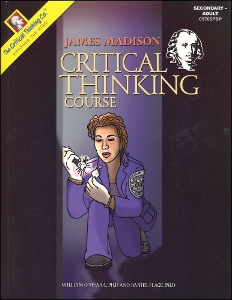
Students in high school and beyond—even adults—might want to tackle the James Madison Critical Thinking Course. This huge, 534-page worktext is more challenging than The Fallacy Detective but it seems more approachable than most other formal logic courses. This is probably because most lessons are presented as cases being investigated by a police detective. Other situations and subject matter are also used, but almost everything is taught within a practical context. Instruction on each new topic is relatively brief and includes examples.
The book begins with an introduction to critical thinking and continues with topics such as distinguishing between fact and opinion and hazards such as ambiguity or vagueness. At first, students spend most of their time working through exercises which are mostly multiple-choice questions—but these questions are not easy!
In the fourth chapter, students begin to analyze and construct arguments and conclusions using letters to stand in the place of statements. In the next two chapters, students frame arguments and conclusions using symbols.
From there it takes a plunge into propositional logic and categorical syllogisms, devoting about 250 pages to these topics in two very long chapters. It wraps up with a brief investigation of inductive arguments and informal fallacies.
A quiz concludes each chapter. The instruction guide is vital since it has all the answers plus explanations which will help when both student and teacher are stumped.
See the Critical Thinking Company's site for many other excellent resources.









